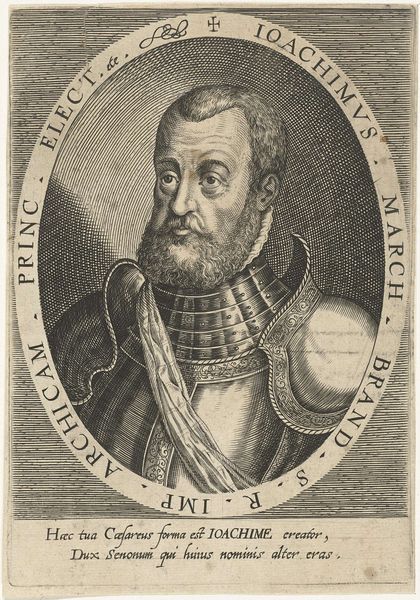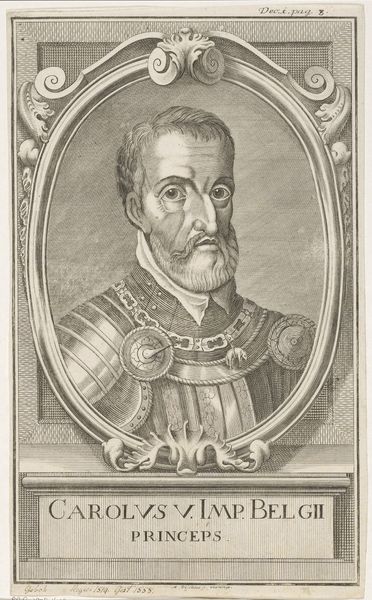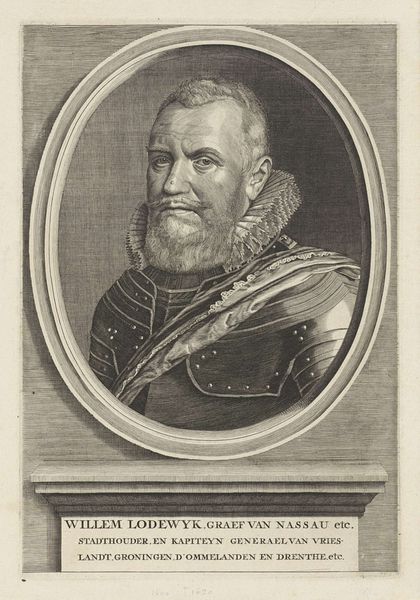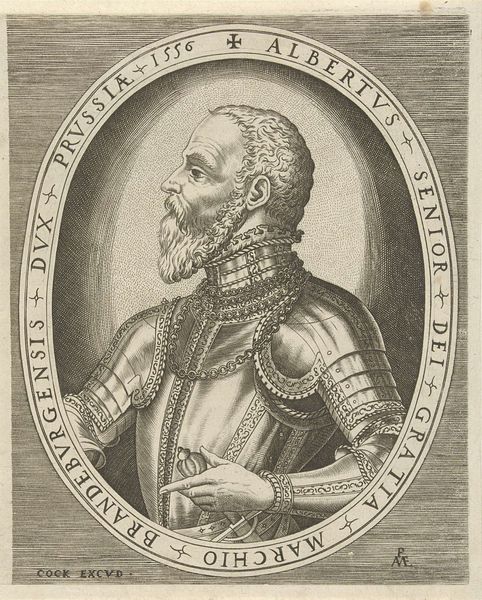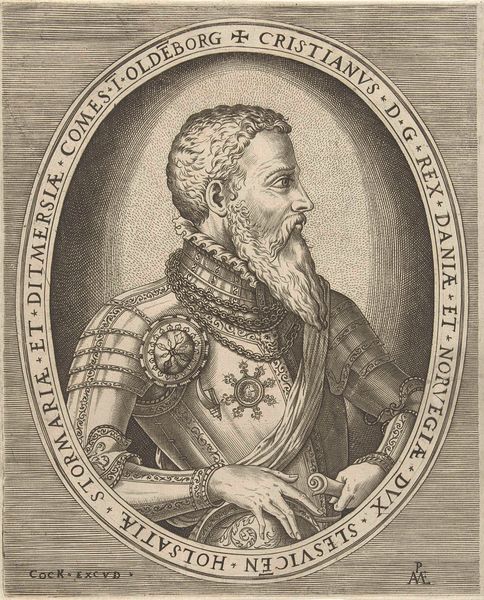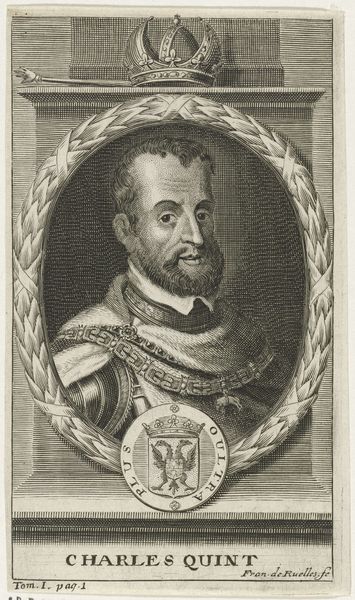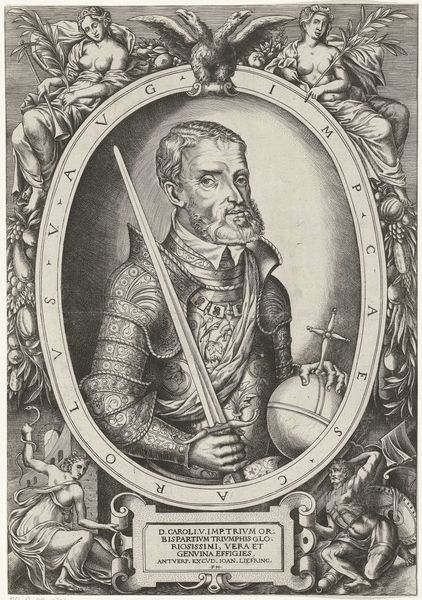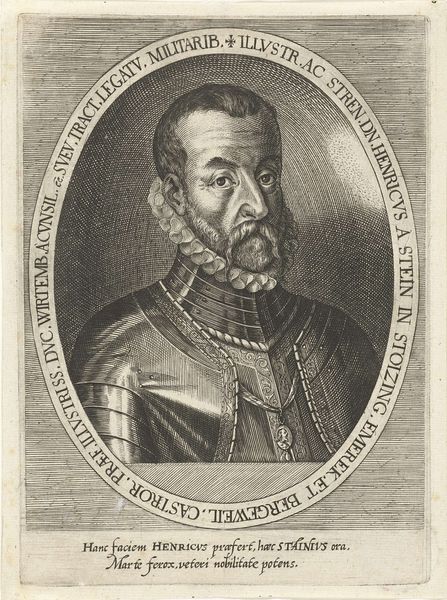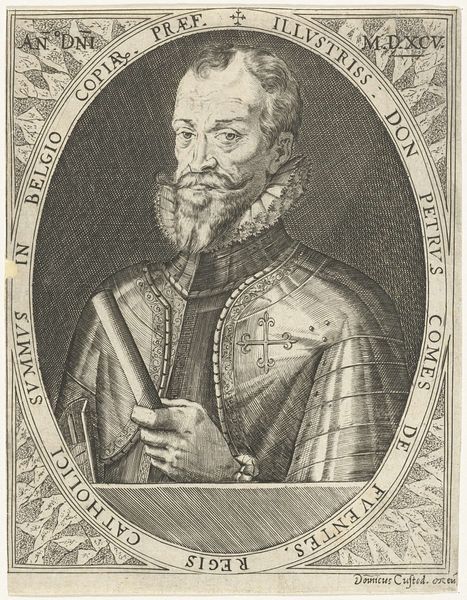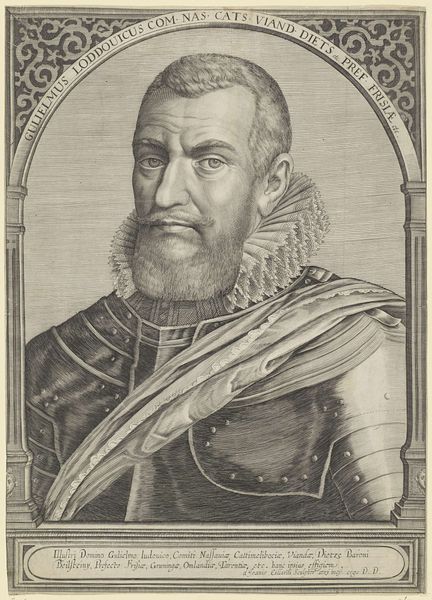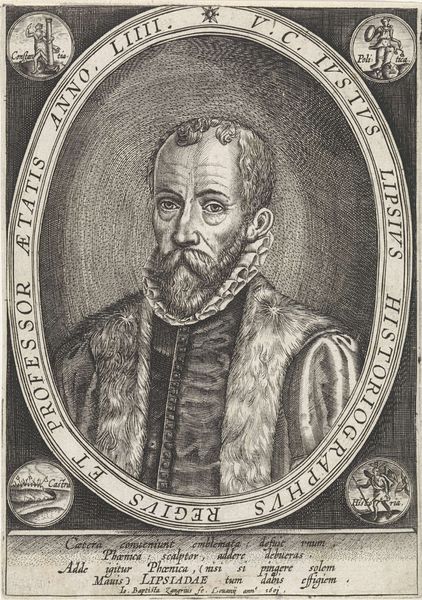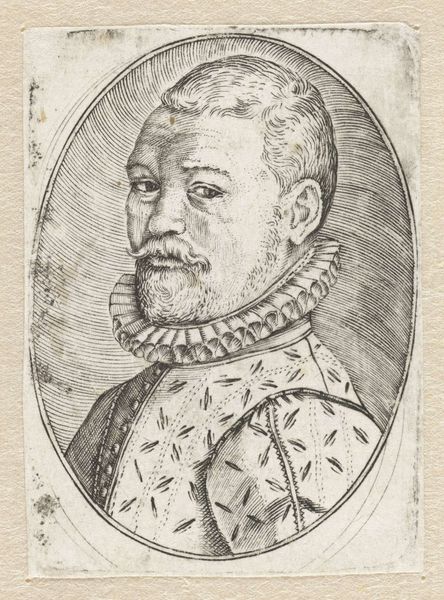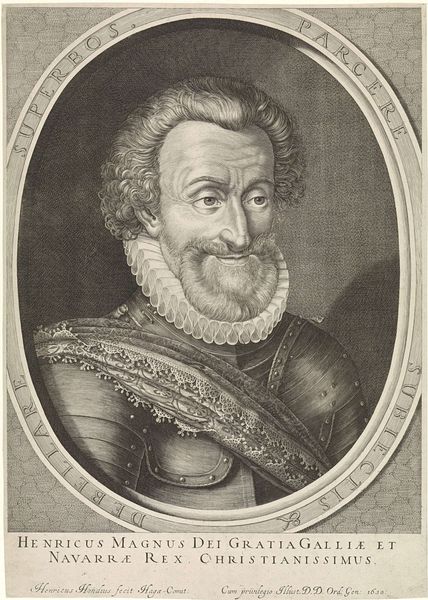
print, engraving
#
portrait
#
baroque
# print
#
old engraving style
#
portrait reference
#
history-painting
#
engraving
Dimensions: height 179 mm, width 117 mm
Copyright: Rijks Museum: Open Domain
Editor: So, this is Pieter de Jode the Younger's "Portret van Philips de Montmorency," created sometime between 1628 and 1670. It's an engraving, so it has this very precise, linear quality. The sitter looks incredibly self-possessed, even a little severe. What's your interpretation? Curator: What strikes me is how this portrait participates in constructing and reinforcing notions of power and nobility. Consider Philips de Montmorency's position – a nobleman entangled in the tumultuous politics of the 16th century. Editor: You mean like the Dutch Revolt? Curator: Precisely. This portrait, likely created posthumously, contributes to the narrative surrounding his legacy. The very act of commissioning and disseminating such an image – its strategic deployment, if you will – becomes a political statement. The engraving is crisp, and the detail reinforces authority, but did he actually support the populace or his title? How do you think the details in the portrait – the armor, the collar, even the small ram pendant – work to construct his image? Editor: I see what you mean, his attire symbolizes prestige and authority but contrasts with the suffering of the revolt and questions the moral stance that portraits don't immediately reflect. Curator: Exactly. This print prompts questions about the relationship between representation, power, and historical memory. Editor: That really makes you think about who gets remembered and how. Thanks! Curator: Indeed, history is a battle over narratives. Glad we could discuss this artwork together!
Comments
No comments
Be the first to comment and join the conversation on the ultimate creative platform.
